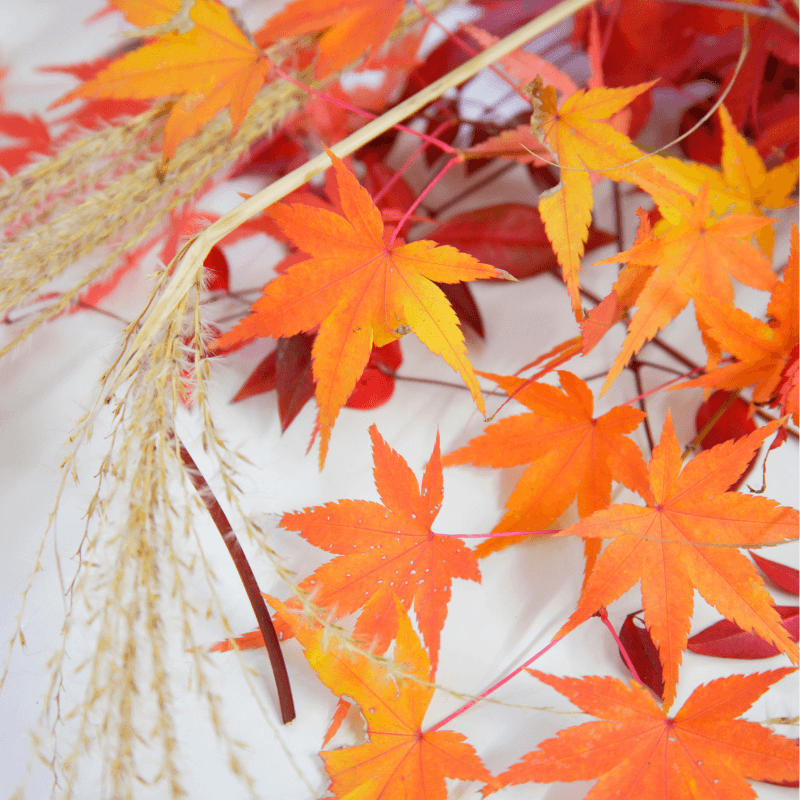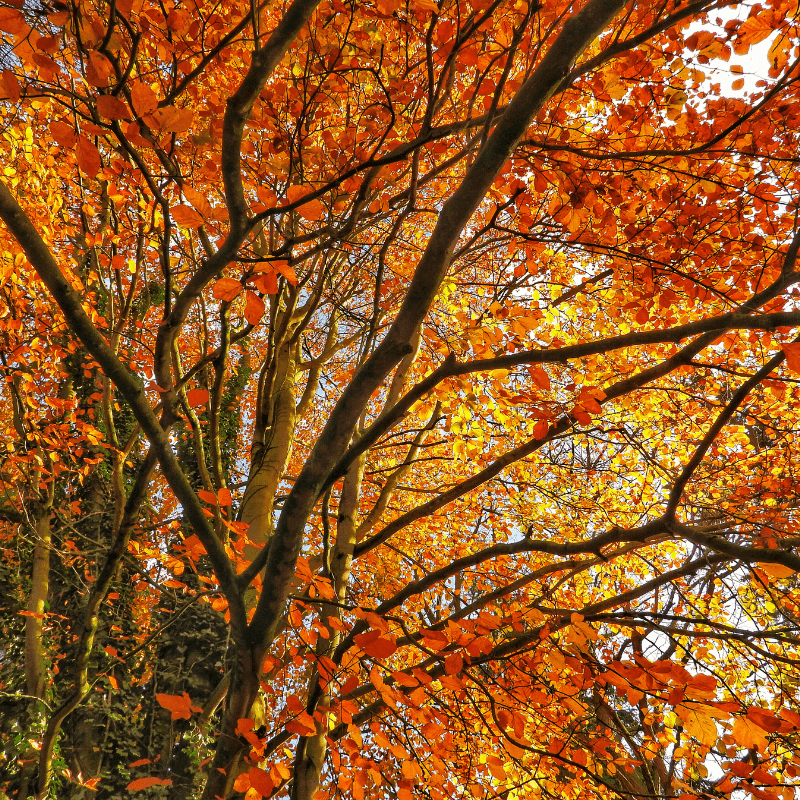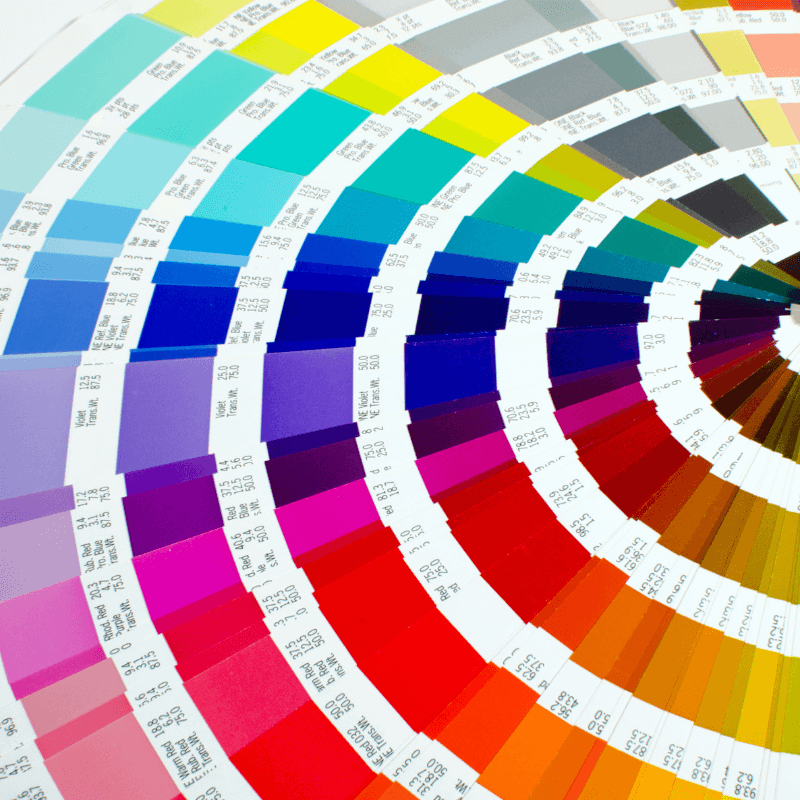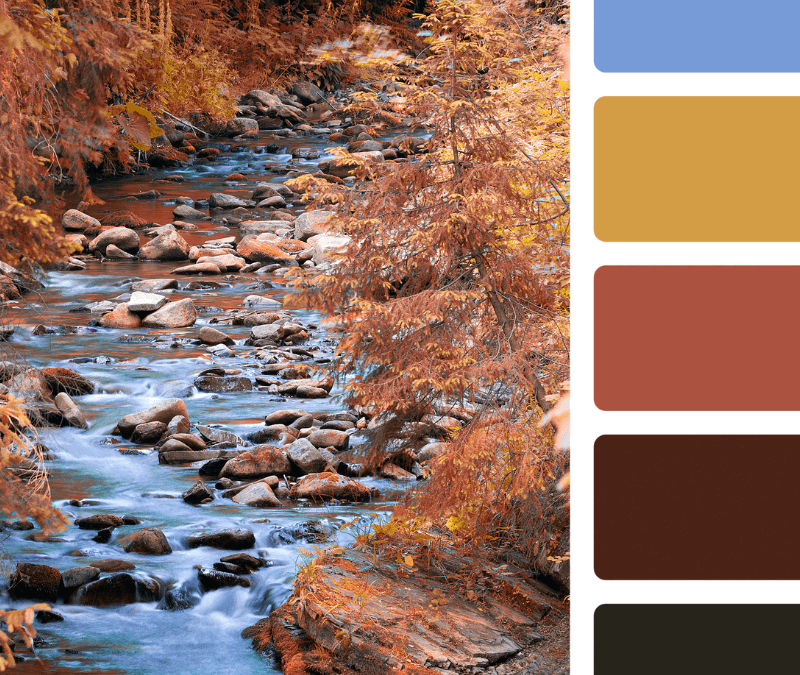Discover the Art of French Colour Vocabulary in Autumn
As I sit here writing this blog post, I’m gazing out of my office window at the enchanting autumn scene, savouring the splendid hues of the season. This breathtaking autumn panorama has sparked my musings about colours in the French language, and how mastering French colour agreements can elevate your confidence as a learner.

Challenges of Adjectival Agreements
Have you ever found it tricky to remember the rules for adjective agreement while speaking?
In conversations, our brains are working at lightning speed. We’re not only thinking about what we want to say but also processing the other person’s words, tone, and body language. Add in the challenge of recalling vocabulary, managing pronunciation, applying grammar rules, and keeping our “English brain” at bay — it’s no wonder mistakes happen!
That’s why mastering French colour agreements can feel like such a relief. You’ll free up mental space for enjoying your conversations rather than worrying about every little ending.


In this post, we’ll delve into the world of French colour vocabulary. By mastering French colour agreements and understanding the fascinating exceptions, you’ll simplify your learning while making your French sound more sophisticated and natural.

Exceptional French Colour Vocabulary
Why not simplify your life and impress your French friends at the same time? In French, some colours are rebels — they never change form, no matter what they describe. Understanding these makes mastering French colour agreements much easier.
Rebels of the Colour World
You probably already know that orange and marron never change. They’re perfectly suited to autumn, and you can use them freely without any agreement — ever!
But that’s not all. When a colour is modified by another adjective or by a noun used as an adjective, it stays invariable. These little tricks are gems for learners who want to sound natural without overthinking.
Expanding the List
Did you know that you can expand this list? “Kaki” (khaki), “bordeaux” (maroon/burgundy), “prune” (plum-coloured), and “olive” (olive-green), are also members of this rebel gang!
The Magic of Modifiers
Another nifty trick is to use modifiers! When a colour is modified by another adjective or a noun used as an adjective, it doesn’t need to agree – youpiii! Take a look at these 16 examples; they are all “invariables” – which means they never change:

16 autumnal colours that are bound to impress and are super-easy to use.
No agreements required!
- vert foncé = dark green
- vert pomme = apple-green
- vert sapin = pine-green
- vert caca d’oie = a yellowy-green
- vert bouteille = bottle-green
- bleu clair = light blue
- bleu nuit = midnight-blue
- gris ardoise = slate-grey
- brun foncé = dark brown
- jaune vif = bright yellow
- jaune verdâtre = yellowy-green
- jaune moutarde = mustard-yellow
- jaune saffron = saffron-yellow
- jaune miel = honey-yellow
- rouge sang = blood-red
- rouge carmin = crimson-red
Each of these stays the same, whether you’re describing a single leaf (une feuille jaune moutarde) or a whole forest (des feuilles jaune moutarde).
Applying Your Knowledge
Autumn is the perfect season to test out your new skills. Try weaving some of these colour expressions into your French conversations. Your friends will be delighted to hear you use them, and you’ll feel more confident knowing you don’t need to worry about agreement.
Mastering French colour agreements is about more than grammar; it’s about freeing yourself to enjoy the language. With these simple exceptions, your learning journey becomes smoother and more fun.
So this autumn, embrace the palette of French colours and impress your friends with your newfound knowledge. Let me know how it goes – I always love hearing from you!
Join Our Language Learning Community
Remember you’re not alone in your language learning journey. Our vibrant community of learners is always here to support you. Join us in our free Facebook group Sound More French with Frannie, to share tips, ask questions, and connect with like-minded learners.


I love being able to describe colors more accurately so I like this list
Wouhou ! So glad you like it, Mary! I love the fact that you can be more descriptive and forget about agreements! A win-win in my eyes! Gagnant-gagnant !